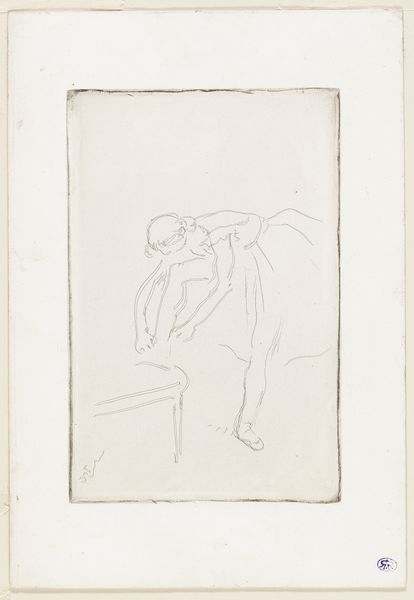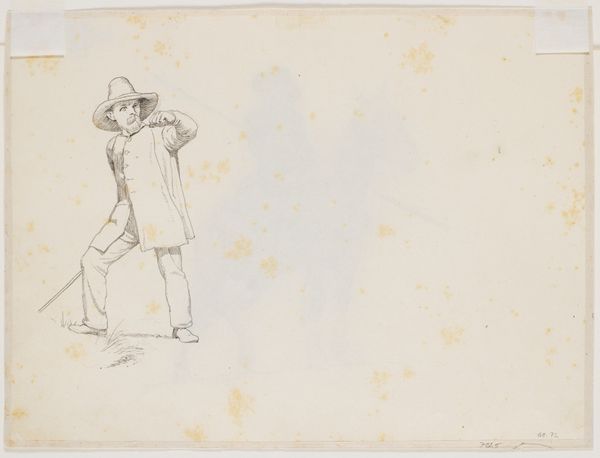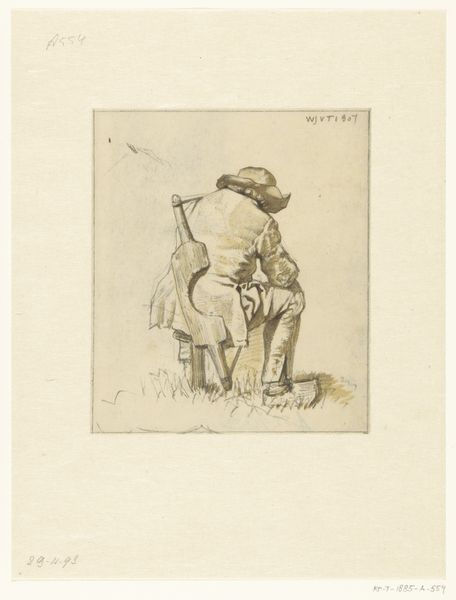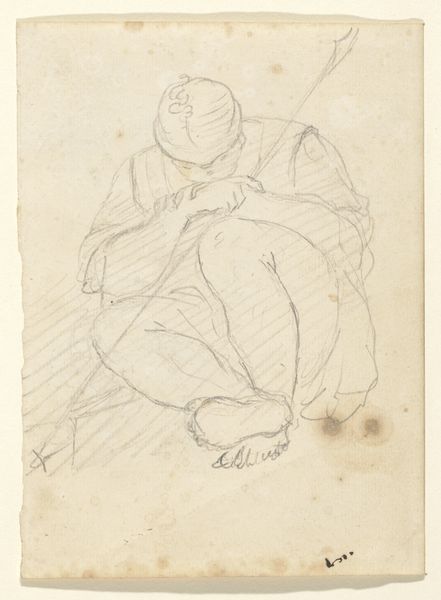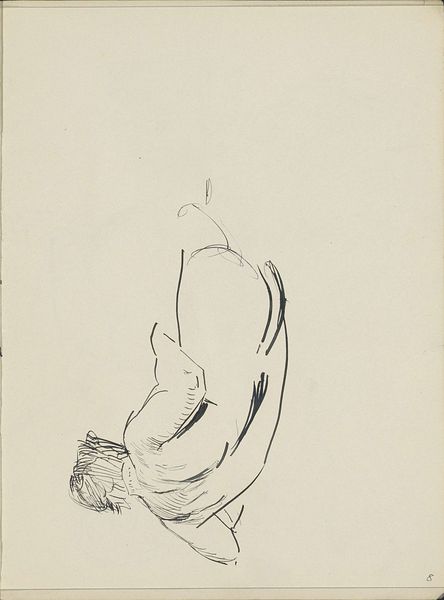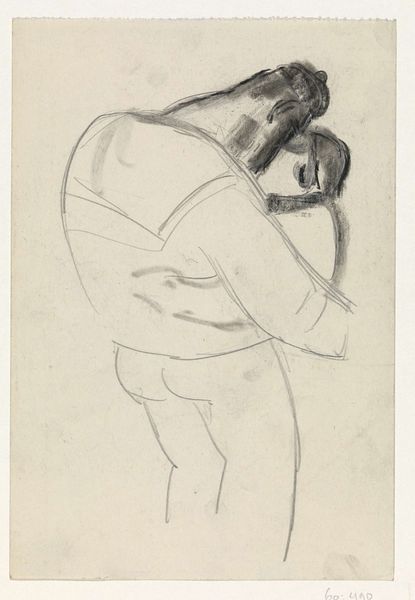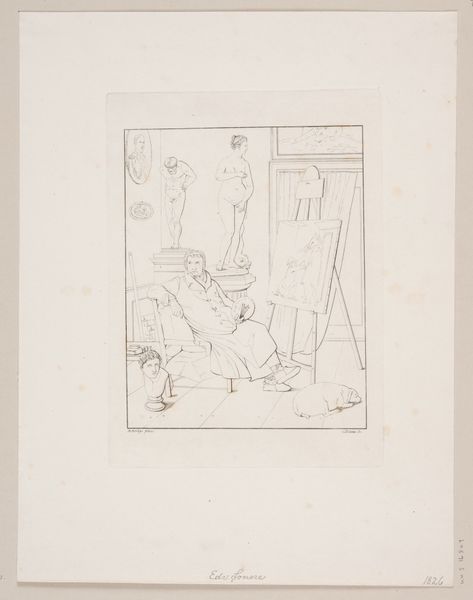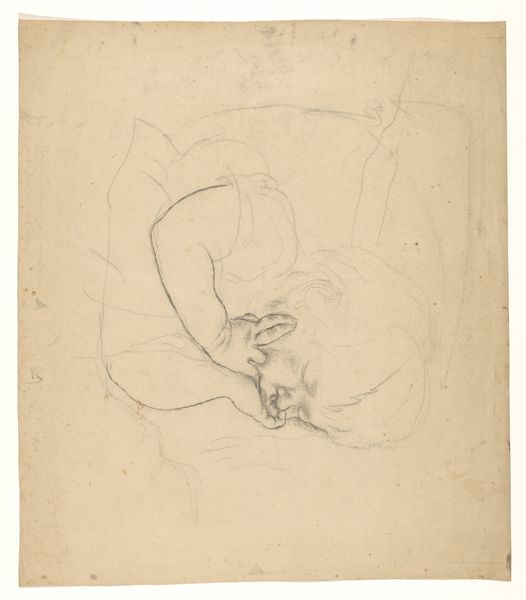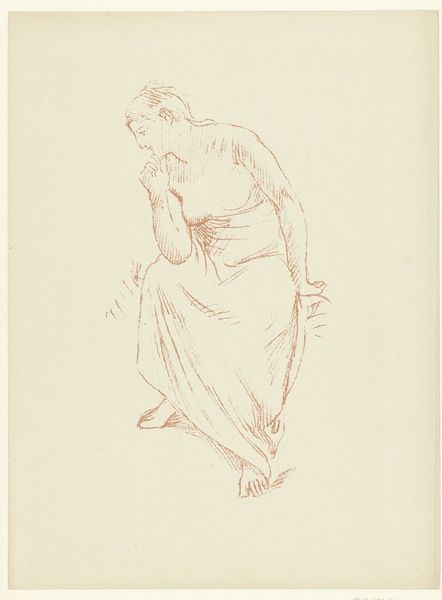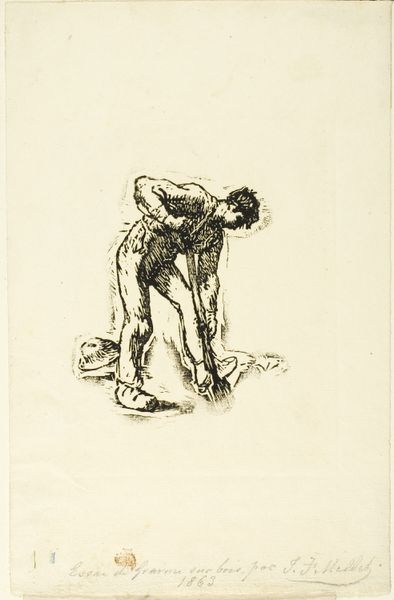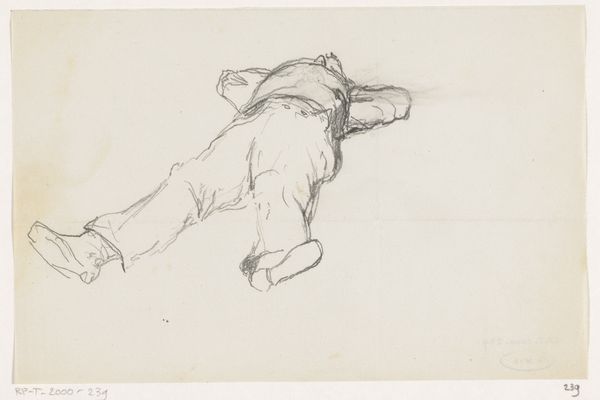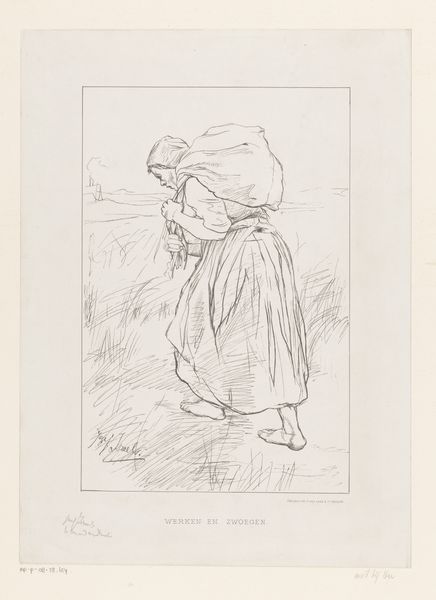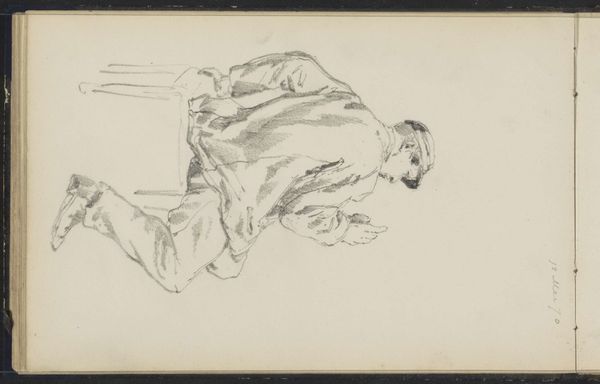
drawing, pencil
#
drawing
#
etching
#
figuration
#
linocut print
#
pencil
#
realism
Dimensions: 117 mm (height) x 103 mm (width) (bladmaal)
Curator: Here we have Ludvig Find’s drawing, simply titled "Man der graver" which translates to "Man Digging," dating from around 1869 to 1945. It’s a pencil and ink drawing on paper, a study in simple labor. What’s your immediate take? Editor: It's stark, isn't it? He's bent over, anonymous, consumed by this labor. There's a sense of relentless effort. It feels… elemental, in a way. Like Sisyphus, but with earth. You can almost feel the weight. Curator: Find’s strength lies in the way he captures the working class experience. There's nothing romanticized here, the material conditions are all there, and we can infer quite a lot about the social strata represented here by considering labor as both act and subject matter. Note the very loose application of tone in his clothing in stark contrast to the medium and fine lines of his actual pose and act. Editor: Absolutely. It lacks sentimentality. What gets me is the back is turned toward us. We don't know what he thinks about digging, but instead we see it from an outsider's POV--that of one passing by on their way elsewhere? He's literally framed to work. Curator: Indeed. We can't know what his interior world is or if there even is one. The emphasis becomes solely the physical act and how labor of this type constructs the body in turn. The materials are crucial; inexpensive paper, basic drawing tools—it all speaks to the subject matter and the reality Find aimed to capture and challenge. Editor: It makes me wonder, where is he digging? A grave, foundations, his escape? The ambiguity is delicious, don't you think? Curator: Ambiguity, perhaps unintentionally, reveals how the artifice or romanticism can affect something like social-realist imagery, no doubt the result of cheap paper, lack of access to specialized implements... This kind of aesthetic aligns very well, even now, with authenticity, a quality increasingly being marketed through similar imagery in different and even capitalist contexts, a kind of modern inverse... Editor: Ah, interesting. So what was radical is reappropriated. I look at this lonely guy bent double working hard labor with very little else, and it all just melts away. Well, that was fun! Thanks for this fresh angle! Curator: Yes, always important to bring awareness to how production affects perception! And likewise!
Comments
No comments
Be the first to comment and join the conversation on the ultimate creative platform.
